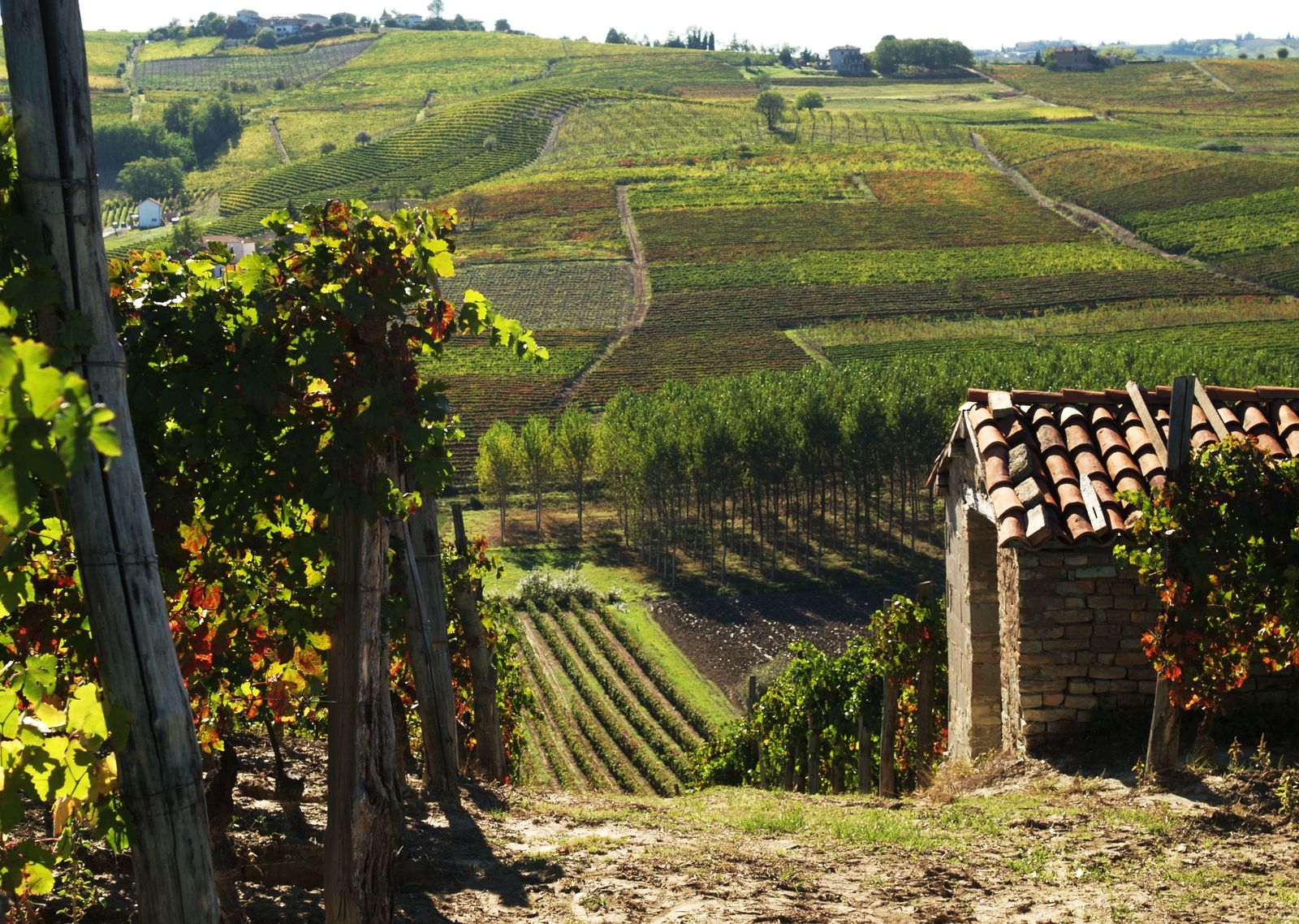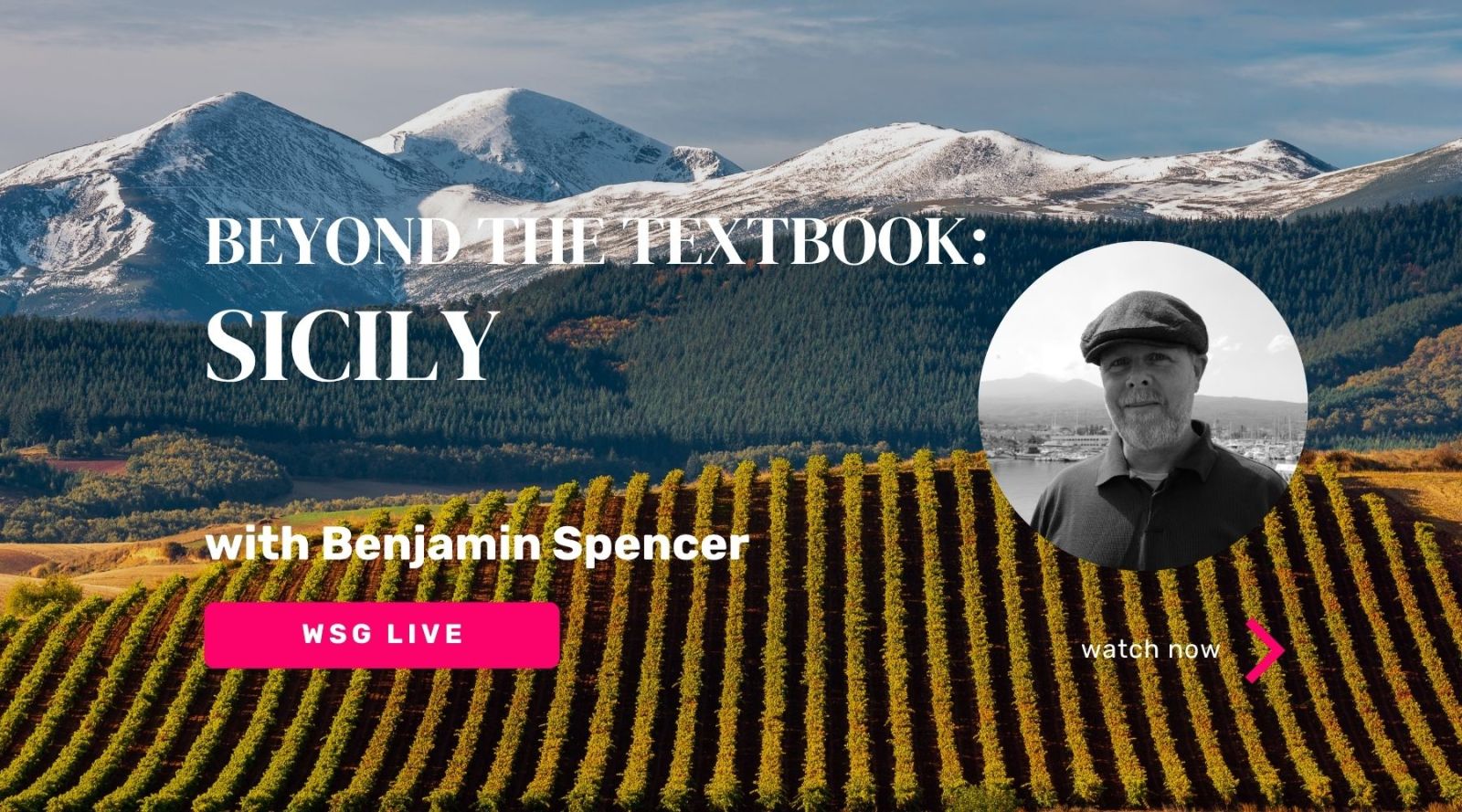BLOG
Ruché: Sweet Wine, Parish Priests and an Unforeseen Comeback Story
Joshua Dunning
Wine Education & Careers

The Etruscans were the first to produce wine in northern Italy; beginning with wild varieties, they cultivated vines in Piedmont centuries before the Romans arrived. Nevertheless, it was the Romans who advanced commercial winemaking, significantly increasing the area under vine and using props, trellises and ‘Greek presses’ to dependably supply the empire’s domestic and trading needs.
Following the fall of the Roman empire, European wine production faced various adversities. Primarily, theological and cultural opposition disrupted production and trade; however, neither Islam nor the so-called ‘barbarians’ entirely eradicated production; modest consumption continued even during the Dark Ages. By the Middle and early Modern ages, winegrowing had advanced significantly, strongly sponsored by noble families and religious institutions—the House of Savoy, the Cavours and the Falettis were the most prominent Piedmont nobility. During this period, Nebbiolo, Freisa, Barbera, Moscato Bianco, Arneis, Timorasso, and Nascetta dominated local plantings.
Other varieties were cultivated more sparsely, including Ruché, which appears to have been grown around the villages of Castagnole Monferrato, Refrancore, Grana, Montemagno, Viarigi Scurzolengo, and Portacomaro in the province of Asti. Local folklore says that peasants from Monferrato would baptise their newborn babies with sweet Ruché wine and water. But, alas, Ruché appears to have fallen out of favour by the late nineteenth century. So much so that Leardi and Demaria excluded it from their landmark 1875 work ‘Ampelografia della provincial di Alessandria’, a comprehensive record of popular varieties.

An unforeseen revival
Piedmont suffered greatly in the decades spanning 1880-1945, the first and second mass emigrations from Italy, compounded by consecutive World Wars (1914-1918 and 1939-1945, respectively) and various viticultural hazards, stifled commerciality and progress. Italy exited World War II defeated and demoralised with a growing development gap and devastated infrastructure. Fortunately, American investment stimulated Italy’s ‘economic miracle’, a period of spectacular growth. Amidst this growth, locals fled villages for growing commercial centres, disproportionately affecting minor municipalities like Monferrato. Nevertheless, small winegrowing successes were afoot; despite mounting adversity, commendable endeavours were underway in nearby Barolo and, to a lesser extent Barbaresco, where trailblazing winemaker Angelo Gaja catapulted his winery to stardom.
At the same time, a local clergyman helped change the fortunes of Barbaresco growers; in 1958, Don Fiorino Marengo revived the cantina sociale, forming the Produttori del Barbaresco—the clergy were instrumental in expanding and maintaining European grapegrowing for several hundred years, not least because they consumed large quantities of wine. Similarly, Ruché was saved from near extinction by Don Giacomo Cauda, the parish priest who arrived in Castagnole Monferrato in 1964.
The priest, born in 1927 in Cisterna d’Asti, happened across Ruché in the neglected vineyards attached to his new parish. He picked the Ruché and fermented it separately in demijohns. Then, during a dinner with fellow clergymen, he opened the ‘wrong’ bottle and was stunned. Enthused by its taste and convinced of its potential, the priest immediately bought 4000 Ruché vines from a local nursery and planted his first hectare in 1964. Unsurprisingly, inexorable locals cast aspersions on the priest’s endeavour, labelling him delusional. Regional ecclesiastic authorities also denounced his entrepreneurial commitments.
Nevertheless, the priest endured, selecting and propagating old vines, vinifying Ruché dry and bottling his “Ruché del Parroco” (Ruché of the parish priest) in 28 “pintoni,” or large bottles. The priest found strong support in Castagnole Monferrato’s mayor, Lidia Bianco, a progressive woman and an esteemed poet who previously worked at the Agricultural Institute in Asti. The priest later reflected on his relentless commitments, recalling having finished saying mass, changing his clothes and rushing to his tractor. Insofar as the priest pled forgiveness, he felt reassured that having used the money he earned from wine to forge the oratory and renovate the rectory, God would pardon his pastime.

Between 1964 and 1987, the priest convinced a handful of parishioners to join his cause, encouraging them to either grow Ruché themselves or support his commercial undertakings; Giuseppe Cavallero transplanted a hectare of barbera vines in 1981 to supplement total plantings such that the priest met DOC application requirements (5ha total plantings). At the same time, Giacomo Bologna suggested to Luigi Veronelli, an influential gastronome who campaigned vehemently for Italy’s national gastronomic inheritance, that he should taste the priest’s wine. Veronelli’s subsequent support was pivotal in building momentum for the DOC campaign. In 1987, the government granted Ruché DOC status as a varietal labelled Ruché di Castagnole Monferrato (comprising vineyards around Castagnole Monferrato, Refrancore, Grana, Montemagno, Viarigi, Scurzolengo, and Portacomaro), and by 1988 10 hectares of Ruché were planted around Monferrato.
In 1990, local stalwart Franco Cavalerro founded Cantine Sant’Agata and committed himself to growing and promoting Ruché. Another influential grower, Marco Maria Crivelli, began estate bottling Ruché two years earlier. Ruché grew more popular in Italy around 1994 following the concerted efforts of several growers. Nevertheless, in 1997 more Ruché was sold in Manhattan than in Italy, partly thanks to New York journalist-cum-importer, John Given, who had a keen passion for Italian wine and wrote fondly of Ruché.
In 2001, the Ruché Producers’ Association informal antecedent began meeting informally to promote Ruché, arranging a three-day grape festival and planning commercial activities. In the same year, newly graduated Luca Ferraris began replanting his family’s vineyards and dedicated his commercial efforts to cultivating Ruché. In 2002, Ferraris met Randall Grahm, founder of Bonny Doon, at Vinitaly. Grahm fell in love with Ruché and immediately offered to import 12,000 bottles for his “Il Circo” label in 2003—at the time, Luca produced only 5000 bottles per year. Grahm’s influence cannot be understated; his export arrangement facilitated rapid growth and investment at Ferraris; by 2007, Luca was selling 36,000 bottles to Randall and had dramatically increased his production. The partnership also stimulated international attention, encouraging trepidatious local vigneron to plant and vinify the Ruché.
In 2010, the commission elevated Ruché di Castagnole Monferrato DOC to DOCG, owing to the tireless work of the Producers Association and reflective of the variety’s growing acclaim. International interest exploded soon after, not least because sommeliers and wine students are required to recall DOCG (not DOC) names for examinations. Journalists flocked too, and in 2013 a bottle of Ruché embellished the cover of Wine Spectator. Then scores increased, catalysed by Robert Parker awarding Ferraris’ Opera Prima 92 points. Finally, in 2016, having already expanded his winery, Luca Ferraris was chosen by Don Giacomo Cauda and Francesco Borgognone as an ambassador of the history and future of Ruché, incorporating the priest’s La Vigna del Parroco estate into his own. Subsequently, Ferraris made the Vigna del Parroco his flagship wine.

Origins, morphology, viticulture, and winemaking
Ruché is almost certainly native to the hills surrounding Asti. Previously, some authors hypothesised that the vine had been imported during the 12th century by Cistercian monks from Burgundy. However, a 2016 study closely relating Ruché to two typically northern Italian vines, Croatina and Malvasia Aromatica from Parma, disproved this theory.
Ruché can be identified by its relatively compact, cylindrical medium-large bunches, medium-small, extremely sweet berries, and vigorous canopy, which can require four times as much work as Barbera in identical vineyards. To taste, Ruché is full-bodied, intensely aromatic, structured and reliably spicy.
With the help of machinery and growing retail prices, the workload is neither as intense nor as commercially problematic for growers. Nevertheless, left unmanaged, Ruché’s vigorous canopy promotes intense Peronospora germination; growers must carefully apply sulphur to fruit, bypassing the dense leaf zone, to combat spores directly. Fortunately, Ruché demonstrates moderate resistance to Piedmont’s contemporary scourge, flavescence dorée. Yields are large but light (mostly due to sugar levels); a single truckload of Ruché equates to four tonnes of fruit compared to seven tonnes for a truckload of Barbera.
In the past, Ruché was picked too late and vinified inadvertently sweet; high varietal sugar concentration, lack of temperature control and inapt yeast strains hindered fermentations, which were frequently problematic and concluded early. Today, Luca Ferraris carefully controls fermentation temperature, checks residual sugars twice daily, and works with a local university to select his indigenous yeast population. Additionally, he and other producers often blend parcels in ‘high-alcohol vintages’ (i.e., 2007 and 2003), leveraging cooler sites to enhance freshness. Inspired by a visit to Masi in 1993, Franco Cavallero vinifies his ‘Genesi’ Ruché passito (Amarone style), oxidising sugars and tannins for sweetness. Élevage is more considered now, too. Since 2007, Luca Ferraris has aged a portion of his Ruché in tonneaux for 36 months. Meanwhile, Franco Cavallero ages his wines in various-sized barrels for ageing and blends the final product. A Ruché Riserva aged 12 months in barrel and 12 months in bottle was also recently added to the DOCG.

Into the future
In 2010, 73ha of Ruché were planted in Piedmont, producing roughly 432,000 bottles. Since then, production has exploded; more than 1.1 million bottles will be made in 2022. Castagnole Monferrato now has six restaurants, six hotels and three local wine stores employing dozens of locals and attracting new and returning tourists yearly. Land prices have skyrocketed too; in 2001 a hectare cost roughly 3000 euros, today a single unplanted hectare costs more than 50,000 euros. Thanks to the priest’s foresight, and the unrelenting and enterprising work of a small band of growers, Ruché di Castagnole Monferrato is a success story. Today, more than 30 growers work together, encouraging tourism and international trade and emboldening young producers to continue planting and making Ruché. Tempting as it might be to remain in Piedmont’s famed communes, readers will be pleased having ventured briefly north.


